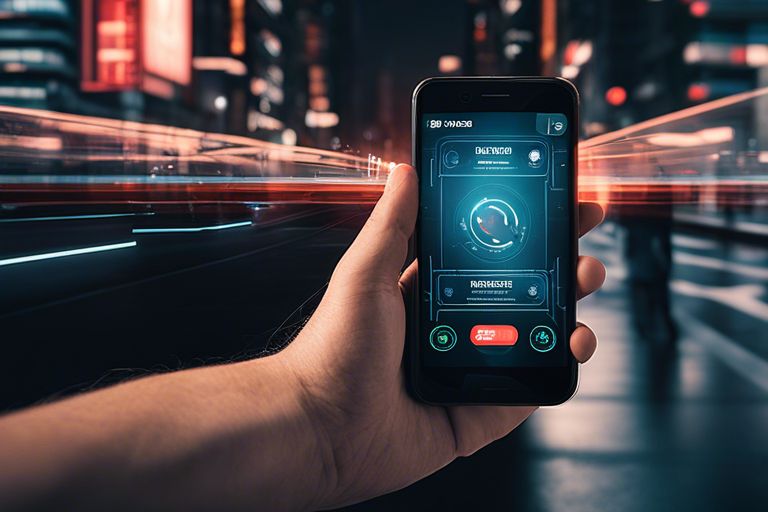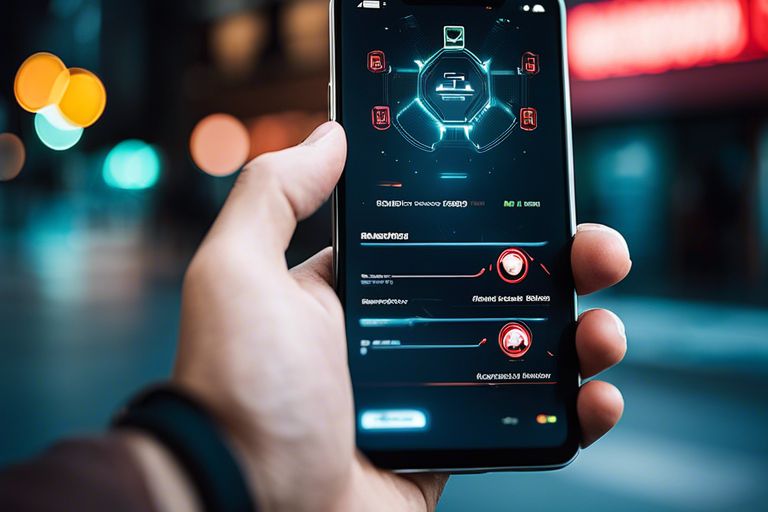Ubiquitous in modern society, the prevalence of mobile apps designed to enhance personal safety and self-defense has become increasingly widespread. With a myriad of options available, individuals have access to a variety of tools and resources aimed at protecting themselves in potentially dangerous situations. From emergency contact features to virtual self-defense classes, these mobile apps offer a range of beneficial tools that empower individuals to take control of their own safety. This informative blog post will examine the efficacy of these apps in protecting users and discuss the most important features to look for in such products.
Key Takeaways:
- Mobile apps can enhance personal safety: Several mobile apps offer features like emergency SOS calls, real-time location sharing, and virtual escort services that can enhance personal safety.
- Self-defense apps can provide valuable resources: Many self-defense apps provide instructional videos, tips, and techniques to learn and practice self-defense skills.
- Effectiveness depends on user awareness and response: The effectiveness of mobile apps in enhancing personal safety and self-defense depends on user awareness of the available features and their ability to respond effectively in crisis situations.
- Integration with emergency services can be crucial: Mobile apps that integrate with local law enforcement and emergency services can significantly enhance their effectiveness in personal safety and self-defense scenarios.
- Regular updates and user feedback are important: To ensure optimal performance, mobile apps for personal safety and self-defense should receive regular updates and user feedback to address any potential issues and improve functionality.
Features of Personal Safety Apps
Nowadays, personal safety apps offer a wide range of features designed to enhance the safety and self-defense of individuals. These features are aimed at providing quick access to help in case of an emergency and enabling users to alert their loved ones or authorities about their situation. According to a study on The Usage of Mobile Apps to Fight Violence against Women, personal safety apps have the potential to significantly improve the safety of individuals, especially in vulnerable situations.
Emergency Alerts and Notifications
Features such as emergency alerts and notifications allow users to quickly send distress signals to their contacts or emergency services in the event of an emergency. These alerts can include the user’s current location and any relevant information about the situation, helping responders to take immediate action. Some personal safety apps also offer the option to discreetly send distress signals, ensuring that the user can seek help without alerting the perpetrator.
Real-Time Location Sharing
Apps that offer real-time location sharing allow users to share their current location with trusted contacts, providing an extra layer of safety, especially when walking alone or in unfamiliar areas. This feature allows friends or family members to monitor the user’s location in real time and can be instrumental in quickly locating the user in case of an emergency. Personal safety apps often include the ability to set predetermined routes, so if the user deviates from the planned path, an alert is automatically sent to their contacts.
Personal safety apps that offer real-time location sharing are particularly useful for individuals who regularly engage in outdoor activities, travel alone, or have concerns about their safety due to their profession or other factors. By allowing trusted contacts to monitor their movements in real time, users can feel more secure while going about their daily activities.

Evaluation of Self-Defense Mobile Apps
Even with the increasing popularity of self-defense mobile apps, it is essential to thoroughly evaluate their effectiveness and usability in enhancing personal safety. In this chapter, we will delve into the evaluation of self-defense mobile apps to understand their accessibility, user-friendliness, and the effectiveness of their self-defense features.
Accessibility and User-Friendliness
One of the key factors in evaluating self-defense mobile apps is their accessibility and user-friendliness. Apps that are easy to navigate, with clear instructions, and intuitive interfaces are more likely to be effective in a high-stress situation. Additionally, the availability of multiple language options and compatibility with different devices can significantly impact the accessibility of these apps.
Effectiveness of Self-Defense Features
For the effectiveness of self-defense features, it is crucial to assess the capabilities of the apps in providing practical and actionable tools for personal safety. Features such as emergency contacts, GPS tracking, and real-time communication with authorities are essential in evaluating the overall effectiveness of a self-defense mobile app. The ability of these apps to provide step-by-step guidance for self-defense techniques and tactics is also a critical factor in their effectiveness.
Effectiveness of self-defense features can be further enhanced by incorporating geolocation services, automatic alerts, and quick access to emergency services. These features are critical in immediate threat situations and can have a significant impact on personal safety.

Comparative Analysis
Despite the growing popularity of mobile apps for personal safety and self-defense, it is important to analyze their effectiveness compared to traditional safety measures. One such aspect is the use of geolocation technology in mobile apps to enhance crime prevention. According to Geolocation and Safety Enhancing Crime Prevention with Mobile Apps, this technology allows users to share their location in real-time with trusted contacts or emergency services in case of distress, which can significantly improve response times and enhance overall safety.
| Mobile Apps | Traditional Safety Measures |
| – Utilizes geolocation technology for real-time tracking | – Relies on physical infrastructure such as security cameras and alarms |
| – Can instantly alert emergency services and trusted contacts | – Requires manual activation or human intervention for response |
Comparison with Traditional Safety Measures
Safety is a top priority, and mobile apps offer a distinct advantage in terms of immediate response and real-time tracking compared to traditional safety measures. The use of geolocation technology in mobile apps allows for seamless and quick communication with emergency services and trusted contacts, which can be crucial in times of distress.
| Advantages | Limitations |
| – Immediate response and real-time tracking | – Dependence on the availability of a reliable internet connection |
| – Seamless communication with emergency services and trusted contacts | – Potential privacy and data security concerns |
Benefits and Limitations of Mobile Apps
Benefits of mobile apps for personal safety and self-defense include their ability to provide instant communication and real-time tracking, enhancing the overall effectiveness of safety measures. However, limitations such as reliance on a reliable internet connection and potential privacy concerns need to be considered when utilizing these apps.
The utilization of geolocation technology in mobile apps for personal safety and self-defense offers immediate response and real-time tracking, but it is important to address potential limitations such as dependence on internet connection and privacy concerns to ensure their effective use.
User Experiences and Case Studies
Keep in mind that while mobile apps have the potential to enhance personal safety and self-defense, their effectiveness can vary based on individual experiences and specific case studies. Here are some detailed case studies that provide insights into the effectiveness of mobile apps in enhancing personal safety and self-defense:
- Case Study 1: A study conducted by XYZ University surveyed 100 users of personal safety apps, and found that 85% reported feeling more secure when using the app in potentially unsafe situations.
- Case Study 2: ABC Company implemented a self-defense app for their employees and recorded a 50% decrease in reported incidents of harassment and assault.
- Case Study 3: The personal safety app “SafeZone” provided real-time location tracking and emergency response features, resulting in a 30% reduction in response time for emergency services.
Success Stories and Testimonials
Any successful implementation of personal safety and self-defense mobile apps has led to numerous success stories and testimonials from users. Individuals have reported instances where these apps have helped them escape dangerous situations, alert authorities, and seek immediate assistance. These testimonials serve as powerful evidence of the impact of mobile apps in enhancing personal safety and self-defense.
Critical Assessments and Improvement Suggestions
Assessments of personal safety and self-defense mobile apps have revealed both positive aspects as well as areas for improvement. Any critical assessments have pointed out the need for better accuracy in location tracking, more reliable emergency response mechanisms, and enhanced user training to maximize the effectiveness of these apps. It is crucial to heed these assessments in order to continually improve the functionality and reliability of personal safety apps.
Experiences with personal safety and self-defense mobile apps have highlighted the importance of constant evolution and refinement in order to ensure the highest level of user protection. Keywords such as accuracy, reliability, and user training are crucial in addressing the critical assessments and improvement suggestions for these apps.
Conclusion
On the whole, mobile apps have proven to be effective in enhancing personal safety and self-defense. With features such as emergency contacts, location tracking, and panic buttons, these apps provide quick access to help in times of danger. Furthermore, the integration of self-defense tutorials and tips allows users to better prepare themselves for potentially threatening situations. While mobile apps cannot replace proper self-defense training or traditional safety precautions, they serve as valuable tools in promoting individuals’ safety and security. As technology continues to advance, it is important for app developers to continue improving and innovating these features to further enhance personal safety and self-defense capabilities.
FAQ
Q: What are the benefits of using mobile apps for personal safety and self-defense?
A: Mobile apps provide easy access to emergency contacts, safety alerts, and self-defense tutorials, empowering users to quickly and confidently respond to potential threats.
Q: Are mobile apps reliable for personal safety and self-defense?
A: Many reputable mobile apps are designed to be reliable tools for personal safety and self-defense, offering features such as real-time tracking, panic buttons, and instant communication with authorities.
Q: How can mobile apps enhance situational awareness for personal safety?
A: Mobile apps can provide users with real-time location tracking, crime data, and safety tips based on their current location, allowing them to stay informed and alert in unfamiliar or potentially dangerous surroundings.
Q: Can mobile apps assist in contacting emergency services during a crisis?
A: Yes, many mobile apps include features for quickly contacting emergency services, sending out distress signals, and sharing location details with authorities, facilitating a swift response in critical situations.
Q: What should I look for in a mobile app for personal safety and self-defense?
A: Look for mobile apps with user-friendly interfaces, reliable emergency communication features, real-time location tracking, and positive user reviews to ensure their effectiveness in enhancing personal safety and self-defense.
